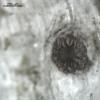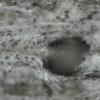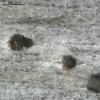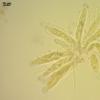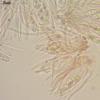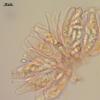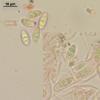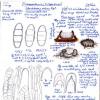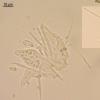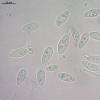
09-12-2025 12:06
 Andgelo Mombert
Andgelo Mombert
Bonjour,Je recherche l'article concernant Hypobryo

07-12-2025 16:07
Arnold BüschlenHallo, ich habe in einer Moos-Aufsammlung (epiphy

08-12-2025 21:04
Mark Stevens"Hello everyone,I'm relatively new to microscopy (

08-12-2025 18:59
 Lothar Krieglsteiner
Lothar Krieglsteiner
.. found by a seminar-participant, I do not know t

08-12-2025 17:37
 Lothar Krieglsteiner
Lothar Krieglsteiner
20.6.25, on branch of Abies infected and thickened

16-03-2014 22:00
Hello,I found this species a few months ago but ha

08-12-2025 13:39
Thomas Læssøehttps://svampe.databasen.org/observations/10572899
It grew on decorticated bleached wood of standing-dead pines (Pinus sylvestris) (N61,054422° E69,456725°).
Apothecia submerged in wood, spherical to deep cupulate, up to 300 mk wide, hymenium grayish, yellowish, smooth, outer surface rough, dark brown, radially splitted.
Excipulum from thick mass of cylindrical hyphae (not well distinguishable); asci bottle-shaped, bulged in the middle, extending in length when mature, clampless, near 60 x 15 mk, wall of ascus with amyloid reaction in upper part, pore inamyloid; spores ellipsoid, 3-segmented when mature, 12,7 (11,4-14) x 5,7 (5,3-6,1) mk; paraphyses filiform (1 mk thick), rare segmented at base.
I used the key in: Sherwood-Pike, M.A., 1987. The ostropalean fungi.

So I assume yours is the right O. minus.
Zotto

Sherwood's specimen has also quite many septa but what she draws is actually the dead plasma, not the cell wall, so the septa look thick.
Zotto


